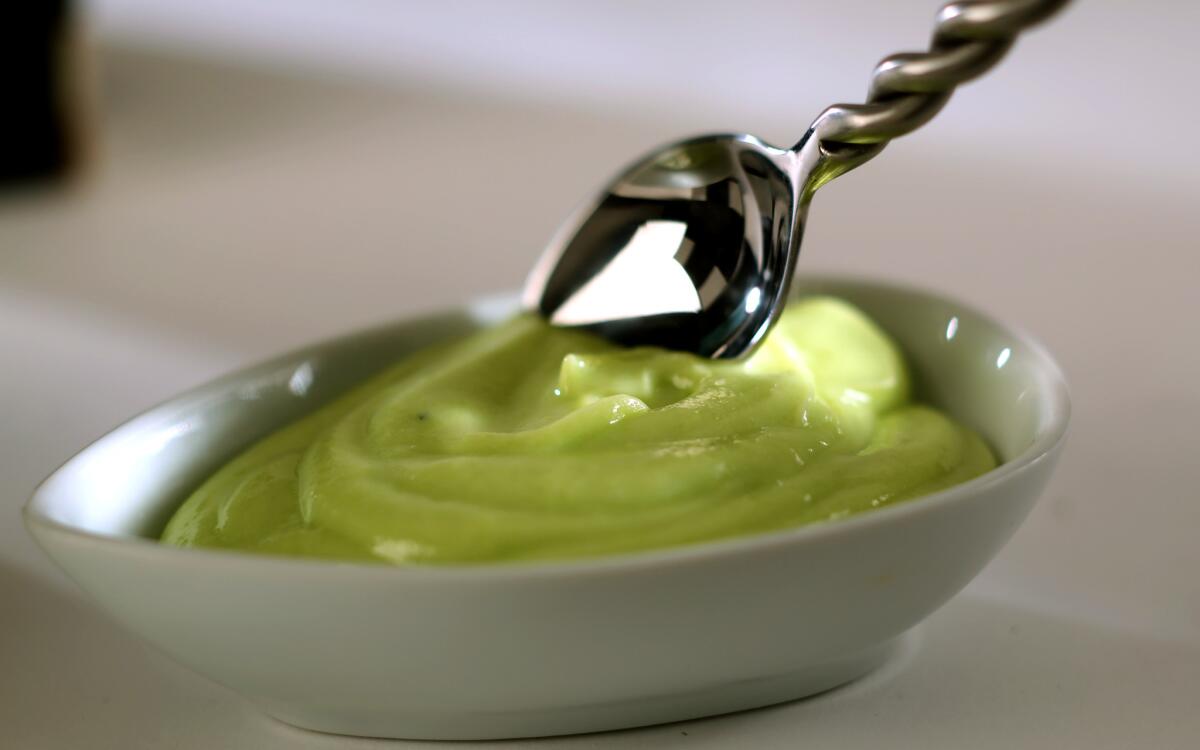Asparagus butter

What’s the point of worrying about organic food, genetically modified organisms, locally sourced items and fair trade if more than a third of it will simply go to waste? Discarded food is a serious issue, and it’s garnering attention from a variety of places. Statistics are stunning: Approximately 40% of food in America goes uneaten — the equivalent of $165 billion a year. Globally, it’s estimated that at least one-third of the world’s food is wasted across the supply chain. Not only could curbing the waste have a profound effect on the very real issue of hunger but it could also help with less-obvious concerns — water supplies, energy and land use, even climate change.
In March, New York chef Dan Barber transformed his Greenwich restaurant Blue Hill into wastED, a three-week pop-up devoted to the theme of food waste and reuse. WastED collaborated with suppliers across the food chain, along with more than 20 guest chefs, to conceive dishes from food that would normally be discarded. In April, the documentary “Just Eat It: A Food Waste Story” premiered to American audiences. In it, filmmakers Grant Baldwin and Jen Rustemeyer pledge to live off of discarded food for six months, and through their journey they explore issues of waste across the food chain — from the farm, through retail and into a consumer’s refrigerator.
“Every day, America wastes enough food to fill the Rose Bowl,” writes Jonathan Bloom in the opening to his book “American Wasteland: How America Throws Away Nearly Half of Its Food (and What We can Do About It).”
“For the most part, we don’t recognize we’re throwing away good food,” Bloom said recently, citing the disconnect when it comes to the amount of food wasted in individual households. Where most people may have a sense that there is a lot of waste society-wide, they don’t implicate themselves as part of the problem. “They don’t tend to look in the mirror because it’s so easily disposed of. It’s down the drain, it’s out with the trash or it’s sent back half-eaten at a restaurant.”
Before produce even has a chance to reach the average consumer, much of it is discarded merely because of imperfections in appearance.
“Around 6 billion pounds of produce is wasted each year because of looks,” says Ben Simon, a co-founder of Imperfect. The venture, scheduled to launch this summer, will take so-called ugly produce from California’s Central Valley and distribute it to subscribers in Oakland and Berkeley at a discounted price.
“The genesis [of wastED] was expanding the whole idea of what waste was,” says Barber, arguing that the American expectation of a plate of food is inherently wasteful. “We cherry-pick what we want to eat instead of eating the whole thing.”
As Barber worked with other chefs in the wastED pop-up, he noticed that many were pulling ideas from items already on their menus. “But they weren’t calling it waste. We’re talking fine dining.” Barber feels that restaurants and chefs should be credited for the creative work they do to make use of everything that comes into the kitchen. “We get blamed for preciousness and elitism. We need to wear what we do on our sleeve. Chefs are doing this already.”
“I grew up doing this. We used everything; that was just a way of life,” says Michael Fiorelli, chef at Love & Salt in Manhattan Beach. “Now it’s funny to me that [it’s trendy].” Fiorelli has a dish on his menu made from sautéed cauliflower leaves, served over a soft mascarpone polenta. The leaves are usually discarded after the vegetable is cleaned. “Why would I throw the leaves in the trash? There are so many different ways to use them — just love them up a little.”
At Union Restaurant in Pasadena, chef Bruce Kalman infuses butter with the woody ends cut from asparagus. He uses it with his fingerling potato gnocchi. “I thought about all the flavors of spring and creative ways to add flavor. It’s asparagus flavor without the asparagus. It eliminates food waste and enhances the flavor of the dish.”
Barber feels the conversation about food waste has only begun. “This is a larger theme beyond just American waste. Where is the conversation going? Because the current conversation doesn’t go far enough. What’s needed is a cultural shift.”
In a medium saucepot, combine the butter, asparagus, salt and thyme. Cook over low to medium heat until the asparagus is softened and cooked through, about 15 minutes. Remove and transfer all of the contents to a blender or food processor, and blend until smooth. Strain the mixture through a fine sieve and chill until needed.
Get our Cooking newsletter.
Your roundup of inspiring recipes and kitchen tricks.
You may occasionally receive promotional content from the Los Angeles Times.
















